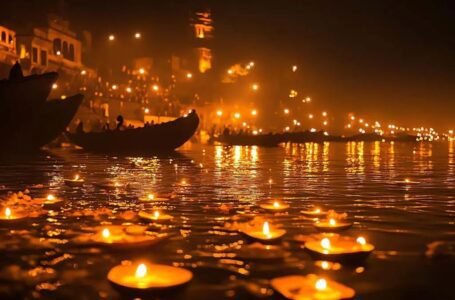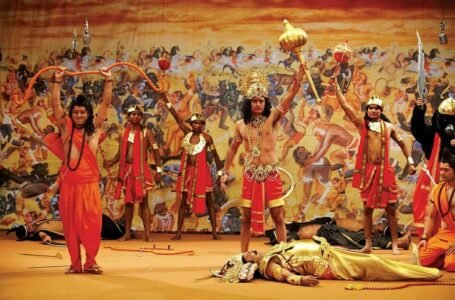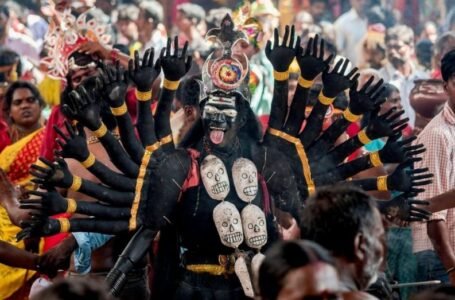Gorkha Regiments – Fearless Warriors of the Himalayas

-Trushti Dand
Origins and Early Recruitment (1814–1857)
The Gorkha Regiments trace their origins to the Anglo-Nepalese War of 1814–1816, which ended with the signing of the Treaty of Sugauli. Although the British East India Company emerged victorious, they were impressed by the extraordinary valor and military discipline of the Gorkha warriors. As a result, the British began recruiting Gorkhas into their army, starting with the formation of the Nasiri Regiment in 1815, which would later become the 1st King George’s Own Gurkha Rifles (The Malaun Regiment). Over the next few decades, more Gorkha units were created, composed largely of men from the hill regions of Nepal. These regiments formed a critical part of the British Indian Army, with their fierce reputation already beginning to take shape by the time of the Indian Rebellion of 1857.
Role in the Indian Rebellion of 1857
During the Indian Rebellion of 1857, the loyalty of the Gorkha regiments to the British crown proved decisive. The Sirmoor Battalion, which would later be known as the 2nd Gurkha Rifles, played a vital role in defending British positions during the Siege of Delhi. Their performance was marked by courage and discipline in one of the bloodiest confrontations of the uprising. The Gorkhas fought side by side with British regiments, and their actions helped the British regain control of the city. Their conduct during this rebellion solidified their reputation as dependable and fearless fighters. The British rewarded their loyalty and bravery by expanding Gorkha recruitment and institutionalizing their presence within the British Indian Army.
Expansion and Service in the British Indian Army (1858–1947)
Following the suppression of the rebellion, the British undertook a major reorganization of their forces in India. The Gorkha regiments were formalized, and their numbers steadily increased. By World War I, there were ten Gorkha regiments in the British Indian Army: the 1st through 10th Gurkha Rifles. Each regiment developed its own traditions and areas of deployment. The Gorkhas saw extensive action on the North-West Frontier, in Burma, and during the Younghusband Expedition to Tibet in 1904. Their skills in mountain warfare and hand-to-hand combat made them ideal for difficult terrains and guerrilla-style engagements. Throughout this period, the Gorkhas earned numerous honors and continued to build a legacy of elite military service within the British Empire.
Gorkha Contribution in World War I (1914–1918)
During the First World War, over 100,000 Gorkhas were deployed by the British to various theatres of war, including France, Belgium, Gallipoli, Mesopotamia, and East Africa. They fought in trench warfare on the Western Front and were instrumental in the Gallipoli Campaign, where their ability to endure difficult terrain was particularly valued. The Gorkhas earned over 2,000 individual gallantry awards during World War I. A historic milestone came when Rifleman Kulbir Thapa Magar of the 3rd Gurkha Rifles was awarded the Victoria Cross in 1915 for rescuing wounded comrades while under enemy fire in France. This was the first Victoria Cross awarded to a Gorkha soldier, and it marked a moment of great pride for the regiment. Their service in the war further reinforced their reputation as courageous and highly reliable soldiers.
Gorkhas in World War II (1939–1945)
The Gorkhas played an even larger role during the Second World War, with nearly 250,000 Gorkhas serving under the British Indian Army. They fought in North Africa, Italy, Greece, the Middle East, Malaya, and most famously in Burma. In the Burma Campaign, they fought critical battles at Imphal and Kohima, halting Japanese advances into India. Their jungle warfare expertise was crucial in these engagements. Twelve Gorkha soldiers received the Victoria Cross during World War II, including Rifleman Gaje Ghale of the 5th Royal Gurkha Rifles and Naik Agansing Rai of the 2nd Gurkha Rifles. Other recipients such as Rifleman Ganju Lama and Subedar Lalbahadur Thapa are also remembered for their exceptional bravery. The Second World War marked the peak of Gorkha service in the British forces and earned them international recognition as elite warriors.
Partition and Formation of Indian Gorkha Regiments (1947–1948)
After India gained independence in 1947, the fate of the Gorkha regiments was addressed through the Tripartite Agreement between India, the United Kingdom, and Nepal. Under this agreement, six of the ten regiments (1st, 3rd, 4th, 5th, 8th, and 9th Gorkha Rifles) were transferred to the Indian Army, while the other four went to the British Army. In 1948, India raised a new regiment, the 11th Gorkha Rifles, comprising soldiers who chose to serve the Indian government. These regiments became part of the newly established Gorkha Brigade in the Indian Army. The regiments retained their names, mottos, battle honors, and traditions, while being integrated into the Indian military structure. This transition ensured the continuity of Gorkha military culture within the Indian context.
Participation in Indian Wars (1947–1999)
Gorkha regiments have participated in every major conflict faced by independent India. During the Indo-Pak War of 1947–48, Gorkha troops were deployed in Jammu and Kashmir to repel Pakistani tribal invasions. In the 1962 Sino-Indian War, they fought valiantly in the North-East Frontier Agency (now Arunachal Pradesh) and Ladakh. One of the most celebrated heroes of this war was Major Dhan Singh Thapa of 1/8 Gorkha Rifles, who was awarded the Param Vir Chakra for holding his post against overwhelming Chinese forces at Pangong Lake. In the 1965 and 1971 Indo-Pak Wars, Gorkhas were involved in key offensives and defensive operations in Punjab and East Pakistan, respectively. In the Kargil War of 1999, the 1/11 Gorkha Rifles played a crucial role in the Batalik sector. Captain Manoj Kumar Pandey of this regiment was posthumously awarded the Param Vir Chakra for his leadership and bravery during the capture of Khalubar Ridge. These contributions are recorded in official military documents and honored annually in regimental events.
Decorations and Gallantry Awards
Gorkha soldiers have received numerous gallantry awards for their service under both British and Indian commands. Under the British, they earned more than 25 Victoria Crosses. In independent India, Gorkha soldiers have received the nation’s highest honors, including two Param Vir Chakras—awarded to Major Dhan Singh Thapa and Captain Manoj Kumar Pandey. Additionally, Gorkhas have been awarded several Maha Vir Chakras, Vir Chakras, Shaurya Chakras, and Sena Medals. These awards are a testament to their continued dedication, skill, and courage across generations. Their records are preserved in official military archives and recognized by the Ministry of Defence.
Organization and Recruitment
The Indian Army currently includes the following Gorkha regiments: the 1st, 3rd, 4th, 5th, 8th, 9th, and 11th Gorkha Rifles. Recruitment into these regiments is open to both Indian Gorkhas (residing in states like Sikkim, West Bengal, Assam, Uttarakhand, and Himachal Pradesh) and Nepali citizens, as per the 1947 Tripartite Agreement. The Gorkha Recruiting Depots are located in Kunraghat (Gorakhpur), Shillong, and Subathu. These depots conduct rigorous physical and psychological tests to select the best candidates. Once enlisted, soldiers undergo specialized training in jungle warfare, mountain warfare, and close-combat skills, making them suitable for operations in challenging terrains and counterinsurgency roles.
Cultural Identity and Traditions
Gorkha regiments are deeply rooted in Nepali culture, which is reflected in their traditions, attire, and ceremonial practices. The khukri, a curved blade carried by all Gorkha soldiers, is both a weapon and a symbol of honor. It is used ceremonially and practically and has become emblematic of Gorkha bravery. Their regimental mottos, such as “Kayar Hunu Bhanda Marnu Ramro” (Better to die than live like a coward), embody their warrior code. Their battle cry, “Ayo Gorkhali!” (The Gorkhas are here!), is historically feared and respected. Regimental events include Gorkha Day, celebrated to honor past heroes and inspire new generations. The Gorkhas maintain a unique dress code during formal parades, including slanted hats, traditional belts, and bagpipe bands—elements that preserve their martial and cultural heritage. Their customs are documented and protected within regimental history manuals.
Legacy and Cultural Importance
The legacy of the Gorkha regiments extends beyond the battlefield. They are viewed as symbols of honor, loyalty, and discipline. The Gorkhas have influenced the Indian Army’s approach to mountain warfare and counterinsurgency tactics. Their regiments have produced generations of soldiers who serve the nation with distinction. Culturally, the Gorkha soldiers have contributed to the diverse identity of the Indian military. Their presence fosters strong bilateral ties between India and Nepal. Many Gorkha soldiers settle in India after retirement and contribute to communities as respected veterans. Their bravery has been the subject of numerous books, documentaries, and military studies. Memorials like the Gorkha War Memorial in Darjeeling and commemorative stamps issued by the government highlight their national importance. Their story is part of Indian and global military history, inspiring admiration from both peers and citizens.
Conclusion
The Gorkha Regiments of the Indian Army are among the most decorated and respected infantry units in the world. Their journey from post-war recruits of the British East India Company to elite warriors of the modern Indian Army is a testament to their enduring spirit. Through their courage in every major war, their loyalty across regimes, and their adherence to tradition, the Gorkhas have built a legacy that commands honor and respect. Today, they continue to serve India with the same fearlessness and dignity that earned them their name—the fearless warriors of the Himalayas.


